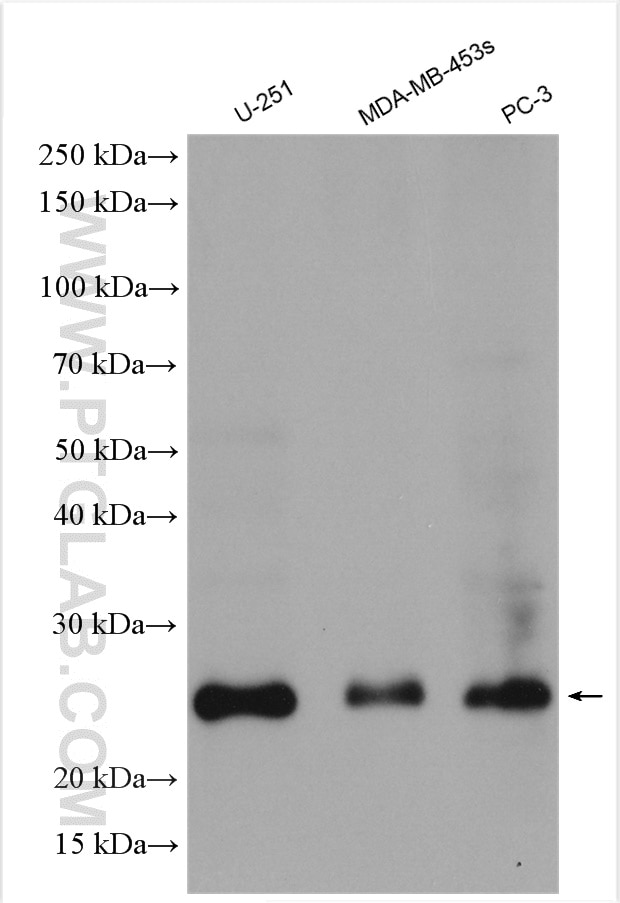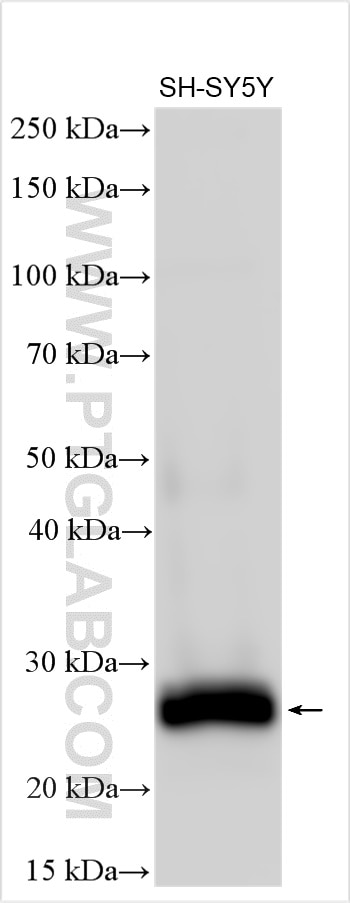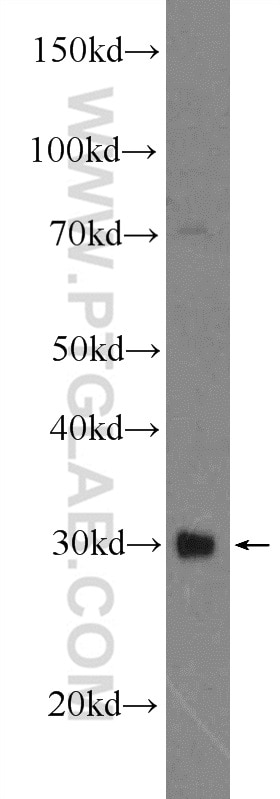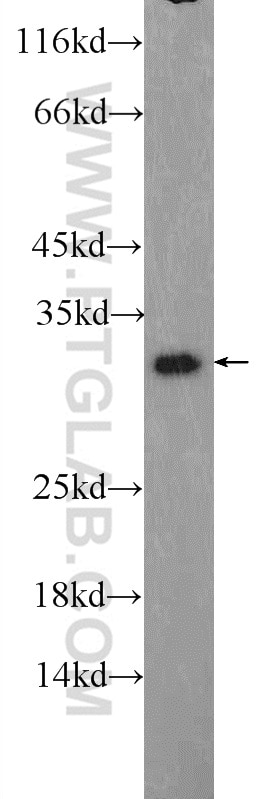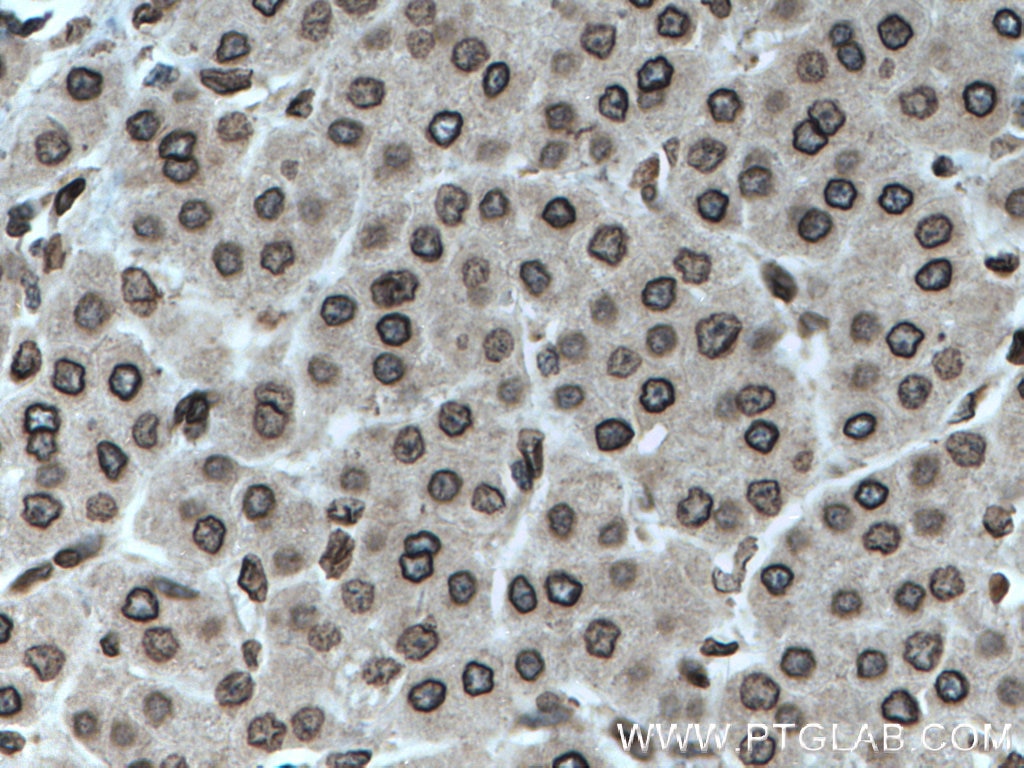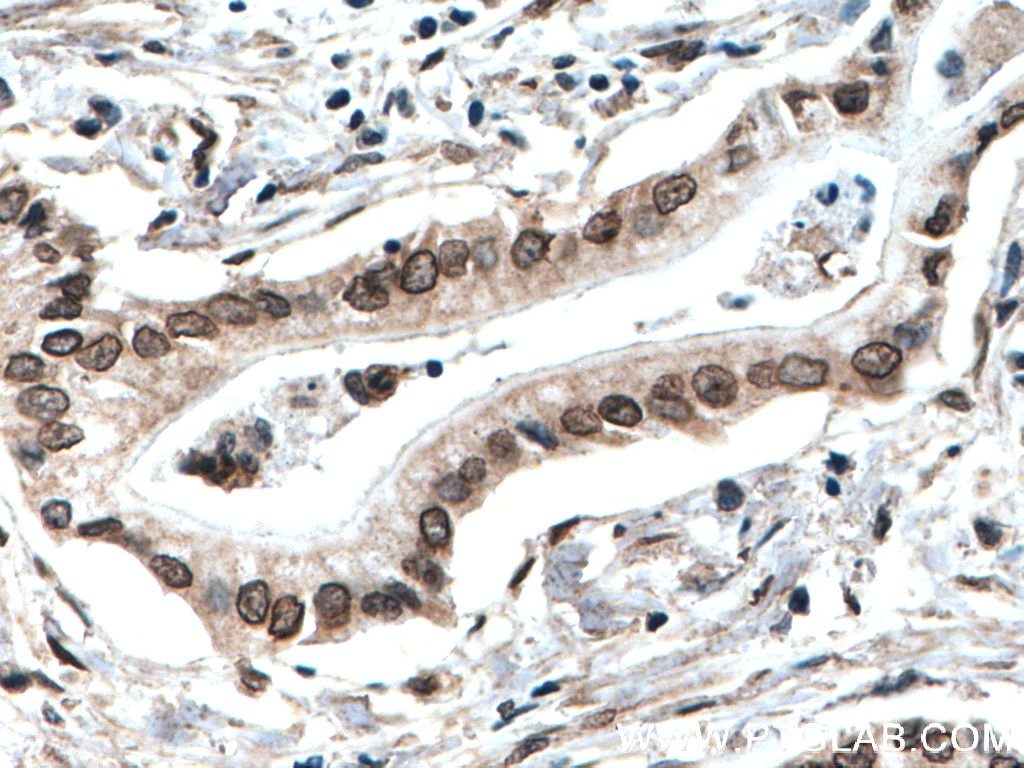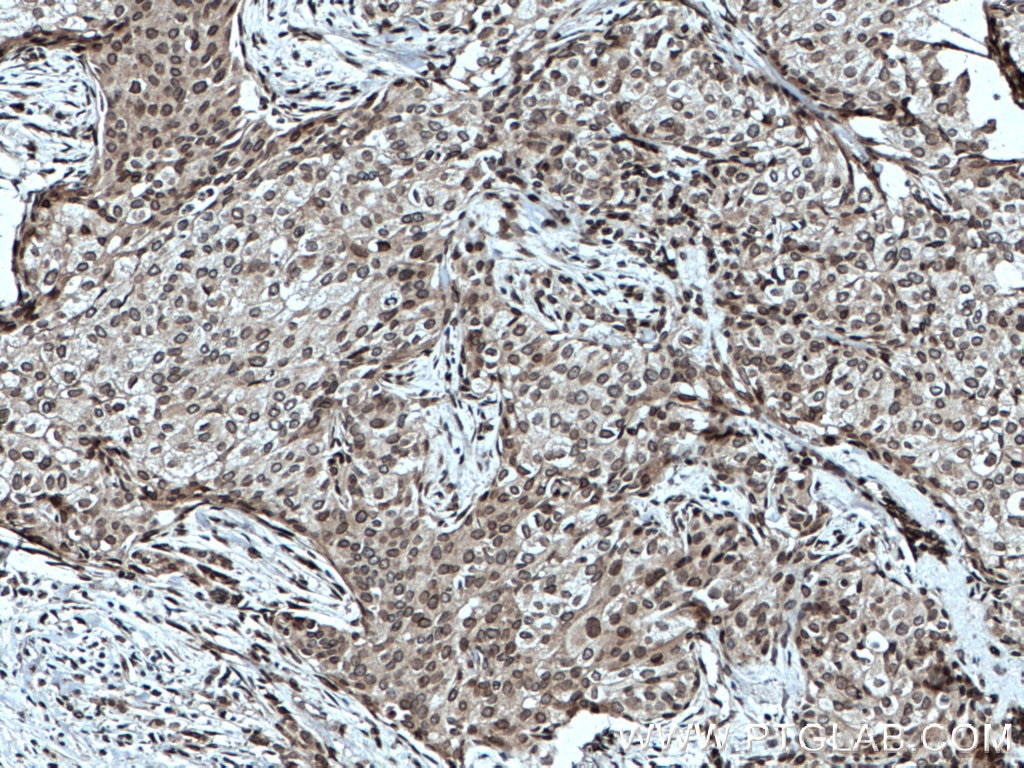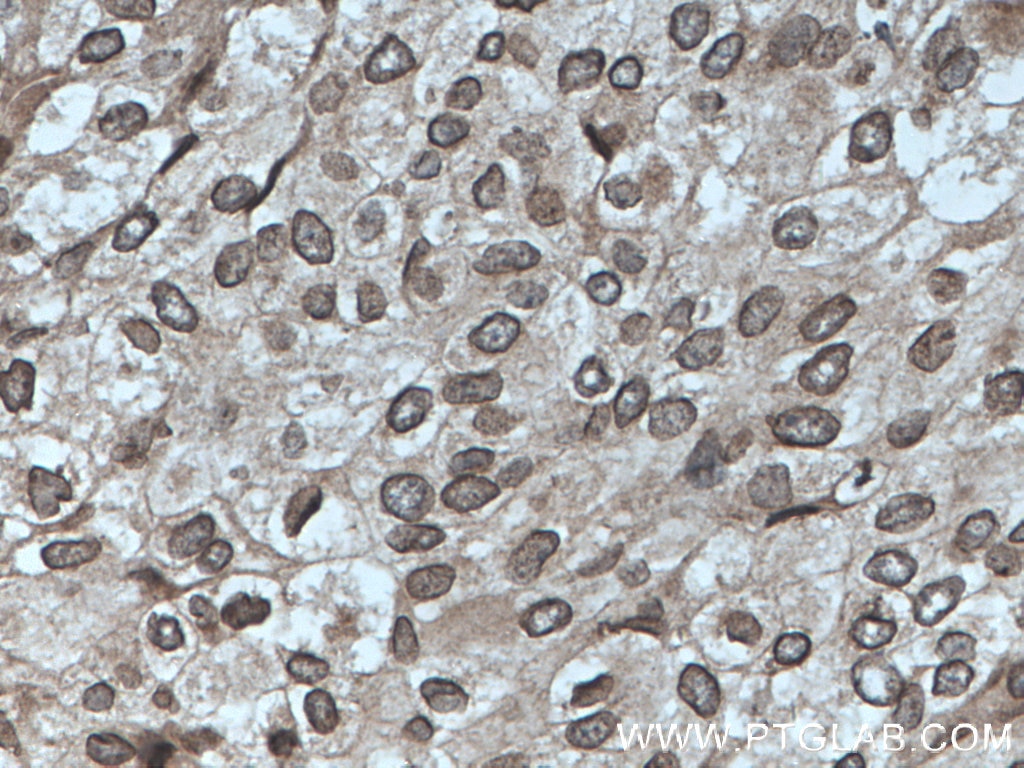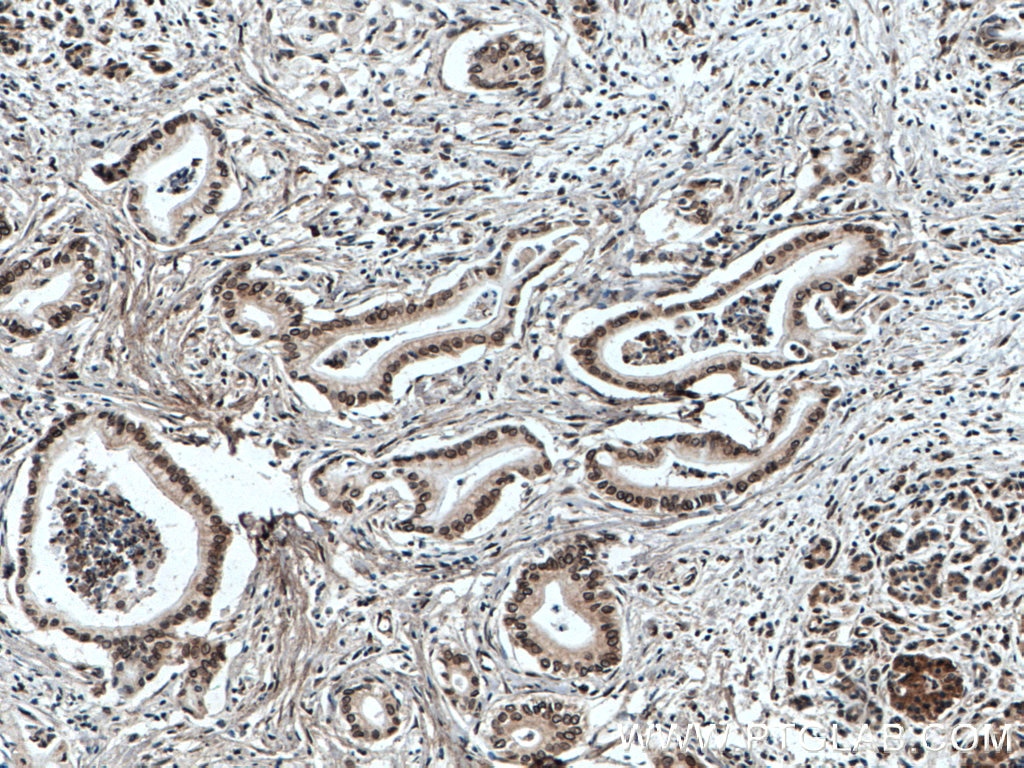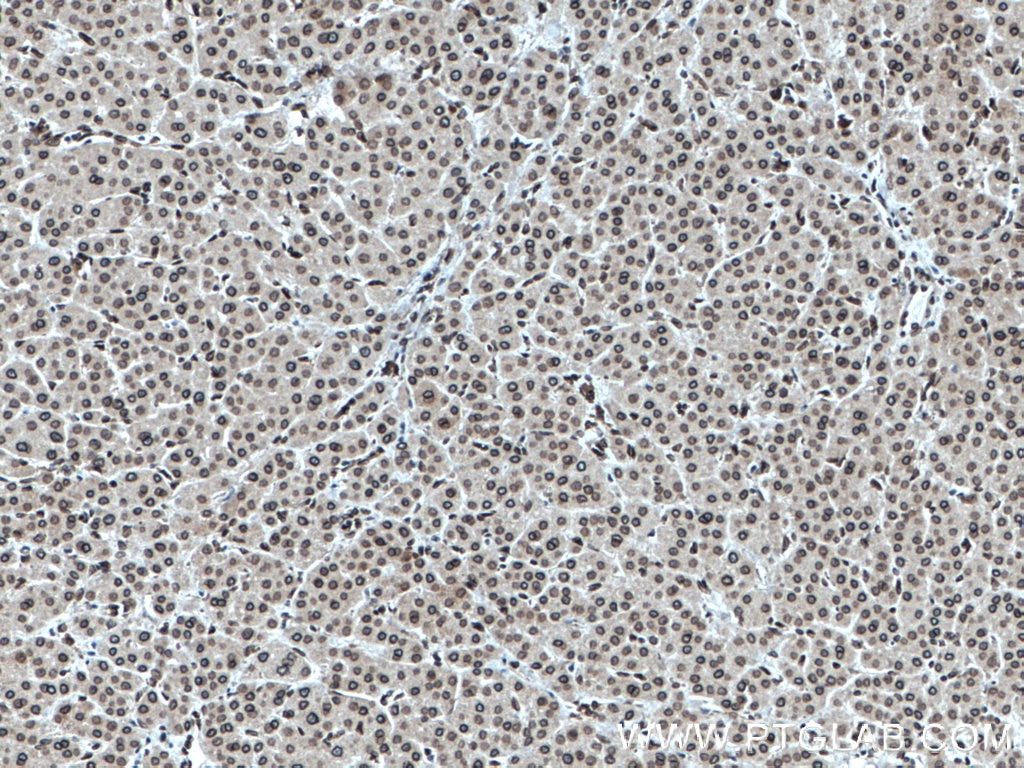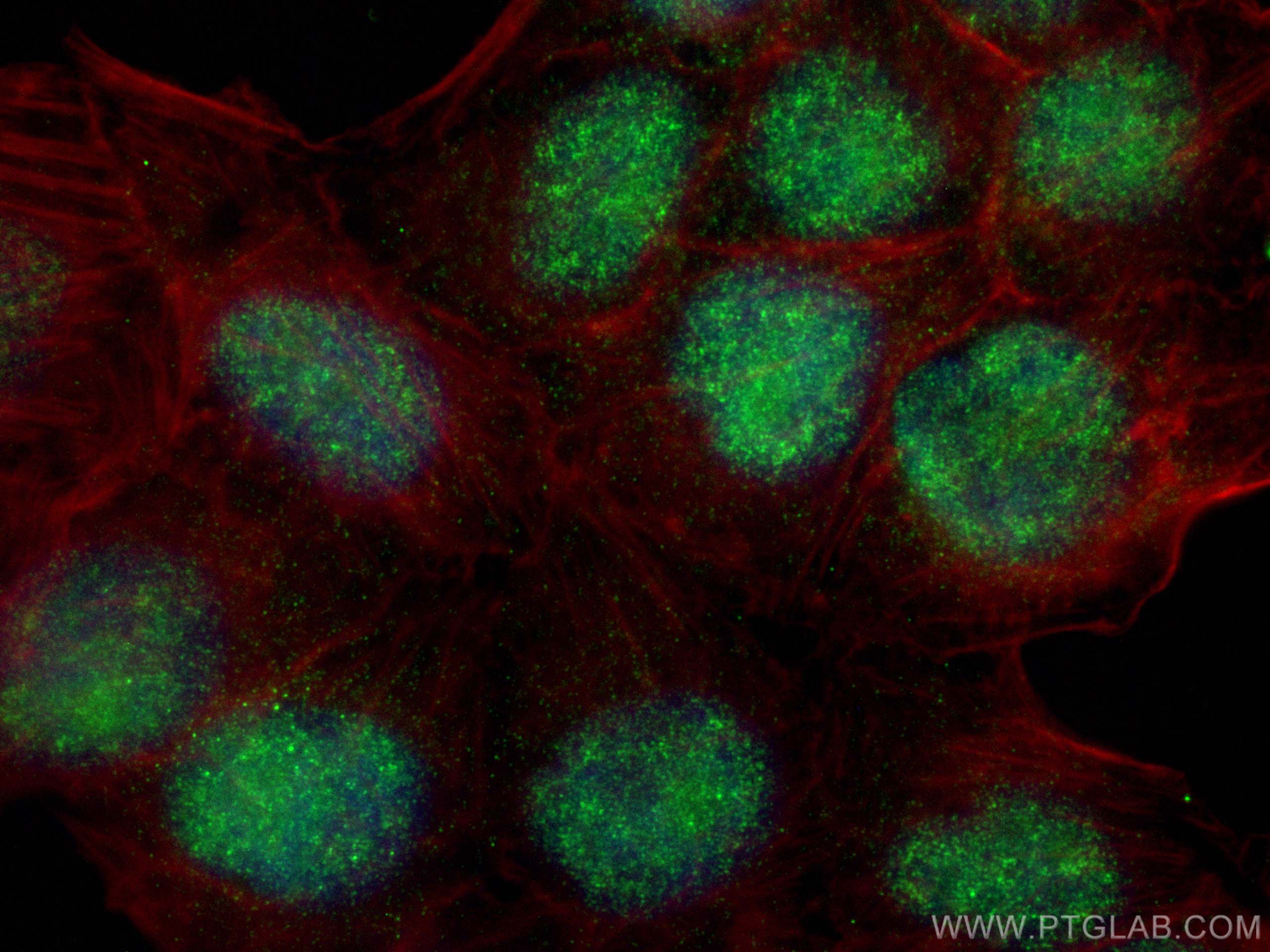Tested Applications
| Positive WB detected in | U-251 cells, Raji cells, A549 cells, SH-SY5Y cells, MDA-MB-231 cells, PC-3 cells |
| Positive IHC detected in | human liver cancer tissue, human breast cancer tissue, human pancreas cancer tissue Note: suggested antigen retrieval with TE buffer pH 9.0; (*) Alternatively, antigen retrieval may be performed with citrate buffer pH 6.0 |
| Positive IF/ICC detected in | L02 cells |
Recommended dilution
| Application | Dilution |
|---|---|
| Western Blot (WB) | WB : 1:1000-1:4000 |
| Immunohistochemistry (IHC) | IHC : 1:50-1:500 |
| Immunofluorescence (IF)/ICC | IF/ICC : 1:300-1:1200 |
| It is recommended that this reagent should be titrated in each testing system to obtain optimal results. | |
| Sample-dependent, Check data in validation data gallery. | |
Published Applications
| KD/KO | See 8 publications below |
| WB | See 178 publications below |
| IHC | See 30 publications below |
| IF | See 10 publications below |
| CoIP | See 2 publications below |
| ChIP | See 5 publications below |
Product Information
25465-1-AP targets TWIST1-specific in WB, IHC, IF/ICC, CoIP, ChIP, ELISA applications and shows reactivity with human, mouse samples.
| Tested Reactivity | human, mouse |
| Cited Reactivity | human, mouse, rat, zebrafish |
| Host / Isotype | Rabbit / IgG |
| Class | Polyclonal |
| Type | Antibody |
| Immunogen |
CatNo: Ag21924 Product name: Recombinant human TWIST1 protein Source: e coli.-derived, PET28a Tag: 6*His Domain: 12-72 aa of BC036704 Sequence: PADDSLSNSEEEPDRQQPPSGKRGGRKRRSSRRSAGGGAGPGGAAGGGVGGGDEPGSPAQG Predict reactive species |
| Full Name | twist homolog 1 (Drosophila) |
| Calculated Molecular Weight | 202 aa, 21 kDa |
| Observed Molecular Weight | 25-30 kDa |
| GenBank Accession Number | BC036704 |
| Gene Symbol | TWIST1 |
| Gene ID (NCBI) | 7291 |
| RRID | AB_2880093 |
| Conjugate | Unconjugated |
| Form | Liquid |
| Purification Method | Antigen affinity purification |
| UNIPROT ID | Q15672 |
| Storage Buffer | PBS with 0.02% sodium azide and 50% glycerol, pH 7.3. |
| Storage Conditions | Store at -20°C. Stable for one year after shipment. Aliquoting is unnecessary for -20oC storage. 20ul sizes contain 0.1% BSA. |
Background Information
Twist-related protein 1 (TWIST1), also named as BHLHA38, is 202 amino acid protein, which contains one bHLH domain. TWIST1 localizes in the nucleus and acts as a transcriptional regulator. TWIST1 inhibits monogenesis by sequestrating E proteins and inhibits tans-activation by MEF2. TWIST1 is expressed in subset of mesodermal cells. The antibody reacts specifically with Twist1 protein. The calculated molecular weight of TWIST1 is 21 kDa, but the observed molecular weight is about 30 kDa due to the post-translational modification(PMID: 30733340).
Protocols
| Product Specific Protocols | |
|---|---|
| IF protocol for TWIST1-specific antibody 25465-1-AP | Download protocol |
| IHC protocol for TWIST1-specific antibody 25465-1-AP | Download protocol |
| WB protocol for TWIST1-specific antibody 25465-1-AP | Download protocol |
| Standard Protocols | |
|---|---|
| Click here to view our Standard Protocols |
Publications
| Species | Application | Title |
|---|---|---|
Sci Adv Phospholipid remodeling is critical for stem cell pluripotency by facilitating mesenchymal-to-epithelial transition. | ||
Theranostics Vitamin D binding protein (VDBP) hijacks twist1 to inhibit vasculogenic mimicry in hepatocellular carcinoma | ||
J Exp Clin Cancer Res ACTN1 promotes HNSCC tumorigenesis and cisplatin resistance by enhancing MYH9-dependent degradation of GSK-3β and integrin β1-mediated phosphorylation of FAK | ||
Int J Biol Macromol Fucoidan/chitosan layered PLGA nanoparticles with melatonin loading for inducing intestinal absorption and addressing triple-negative breast cancer progression | ||
Int J Nanomedicine Combined miR-181a-5p and Ag Nanoparticles are Effective Against Oral Cancer in a Mouse Model | ||
Clin Transl Med FABP4 deactivates NF-κB-IL1α pathway by ubiquitinating ATPB in tumor-associated macrophages and promotes neuroblastoma progression. |
Reviews
The reviews below have been submitted by verified Proteintech customers who received an incentive for providing their feedback.
FH Angie (Verified Customer) (07-26-2025) | WB showed a band below 37 kDa at dilution of 1:1000 incubated overnight at 4°C. Secondary antibody: Donkey-anti-rabbit (Alexa Fluor 680) at 1:20000 dilution incubated at room temperature for 1 hour.
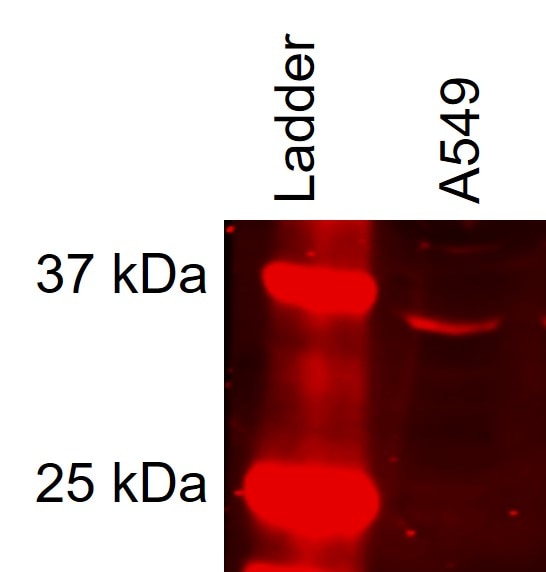 |
FH Pramod Bahadur (Verified Customer) (02-27-2024) | We are missing the vials so I dont have lot number.
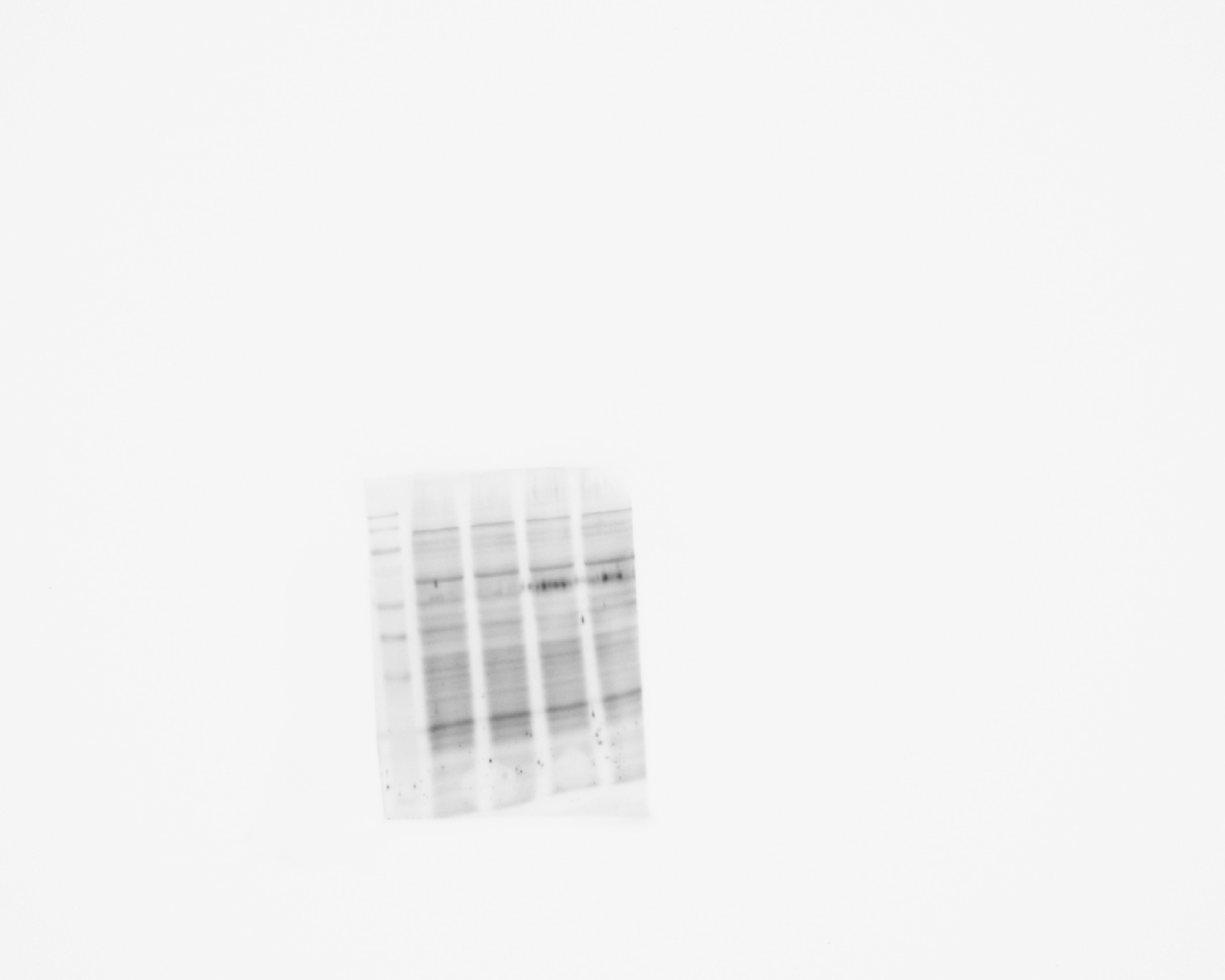 |

